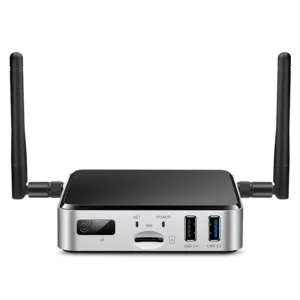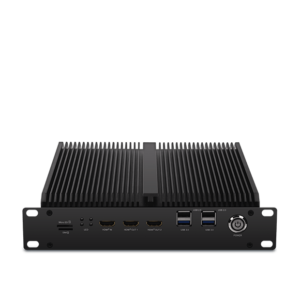A Extensive Guide to Deploying AI on Edge Devices
A Extensive Guide to Deploying AI on Edge Devices
Blog Article
Unlocking the Energy of AI on Side Devices
Real-World Programs of AI on Side Products
Artificial intelligence (AI) is no longer confined to the realm of big, centralized data centers. Thanks to advancements in engineering, edge products today perform an integral role in deploying AI right wherever knowledge is generated. But what does AI on edge units suggest, and exactly why is it making such a hype? Here, we'll examine how arm edge ai operates in real life through edge devices and reveal its wide range of realistic applications.

What's AI on Edge Products?
AI on side products describes deploying synthetic intelligence calculations directly on devices like smartphones, cameras, drones, or IoT sensors. These devices do not require access to centralized servers for control data; as an alternative, they conduct analysis and conclusions locally, making the procedure quicker, more efficient, and often more secure.
The "edge" here simply refers to processing done near or at the source of data technology, in place of depending on the cloud. This shift is driven by the requirements for real-time knowledge control and the need to minimize latency, enhance privacy, and reduce bandwidth usage.
Key Real-World Applications of Side AI
1. Intelligent Security
AI-powered cameras built with face recognition, activity detection, and anomaly recognition are transforming surveillance systems. Edge devices in that domain may analyze movie channels in real-time to recognize suspicious actions, eliminate fake sensors, and enhance public safety. For instance, AI calculations can identify uncommon movements and alert authorities immediately without the necessity to deliver video information to a central server for analysis.
2. Healthcare Tracking
Wearable products and portable medical gear are leveraging ai m.2 module for handling wellness knowledge more efficiently. Edge-based AI in devices like wellness trackers and smartwatches screens users' vitals, such as heartrate, air degrees, or body force, in real-time. These systems analyze data locally and provide quick feedback, paving just how for quicker treatment all through emergencies.
Beyond wearables, advanced medical imaging devices equipped with on-device AI can find signs of conditions like cancer, allowing earlier in the day diagnoses even yet in distant areas without web connectivity.
3. Autonomous Vehicles
Self-driving cars are among the absolute most well-known examples of side AI in action. With detectors, cameras, and LiDAR programs offering as information places, AI computations get position onboard these cars to produce split-second decisions. From sensing pedestrians and obstacles to navigating city roads, side AI ensures that the car operates reliably and efficiently. The real-time control capability of edge products removes the reliance on high-latency cloud programs, ensuring protection in life-critical scenarios.
4. Retail Analytics
Side products in retail surroundings are helping businesses analyze client behavior. Smart shelves and AI-equipped cameras may find client choices, monitor supply, and also customize in-store activities in real time. The information created from they helps stores make educated decisions, increase customer satisfaction, and enhance stock management.

5. Industrial IoT
Factories and professional flowers are adopting edge AI to revolutionize their monitoring and automation processes. AI-powered sensors on machinery identify potential flaws a long time before they result in expensive failures. Predictive maintenance pushed by side AI decreases downtime, enhances output, and ensures protection on the production floor.
6. Individualized Experiences in Customer Products
Your smartphone is a prime example of how edge AI personalizes individual experiences. Characteristics such as for example voice personnel, versatile camera adjustments, and on-device language translation use real-time AI to respond to consumer wants without sending painful and sensitive knowledge to external servers. This fosters both comfort and solitude for the end user.
The Rising Impact of Side AI
The use of AI on edge units continues to rise, pushed by industries' raising need for low-latency, real-time research, and greater information privacy. Its purposes are reshaping industries which range from healthcare and automotive to community safety and retail. By getting AI's energy nearer to where knowledge is made, side devices are not just increasing efficiency but also demonstrating the endless possible of advancement in the present attached world. Report this page